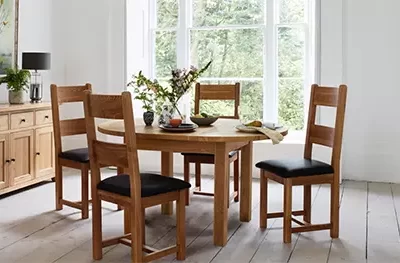When it comes to interior design, furniture plays a pivotal role in shaping the ambiance and aesthetics of a space. While selecting the right furniture pieces is essential, equally important is the art of upholstery – a transformative process that can rejuvenate even the most tired-looking furniture. In this guide, we’ll delve into the world of upholstery, exploring the benefits, techniques, and considerations that come with this intricate art.
The Power of Upholstery
Upholstery is more than just covering furniture with fabric. It’s a transformative process that can breathe new life into old pieces, making them look and feel brand new. Whether it’s a vintage armchair passed down through generations or a thrift store find with great potential, upholstery offers a way to infuse your personal style into furniture.
Choosing the Right Fabric
The first step in upholstery is selecting the right fabric. Consider the functionality of the furniture piece and the overall design scheme of the room. If you’re aiming for durability, fabrics like leather and microfiber are great options. For a more delicate touch, silk or linen can add an air of sophistication. Don’t hesitate to explore different textures and patterns that align with your vision.
Preparation: Stripping and Repairing
Before you start upholstering, it’s crucial to prepare the furniture. Remove the existing fabric and examine the frame for any repairs needed. Tighten screws, fix loose joints, and sand any rough areas. Proper preparation ensures that the new upholstery will have a solid foundation to rest upon.
The Art of Reupholstering
Reupholstering is a meticulous process that involves precision and creativity. Begin by measuring and cutting the fabric according to the dimensions of the furniture. Lay out the fabric and start attaching it to the frame using staples or tacks. As you work, ensure the fabric is taut and free of wrinkles for a polished finish.
Tufting, Trim, and Finishing Touches
Tufting is a classic upholstery technique that involves creating folds and pleats in the fabric to add depth and visual interest. This technique is commonly used in sofas, ottomans, and headboards. Adding trims, like piping or nail head details, can enhance the edges and contours of the furniture piece. These finishing touches contribute to the overall aesthetic and craftsmanship.
Considerations for DIY Upholstery
While DIY upholstery projects can be incredibly rewarding, they also require careful consideration. Assess your skill level and the complexity of the project before diving in. Simple dining chair seats might be a good starting point for beginners, while more intricate pieces might be better suited for experienced upholsterers. Invest in quality tools such as a staple gun, webbing stretcher, and sewing machine to ensure professional-looking results.
Professional vs. DIY Upholstery
Deciding between professional upholstery services and DIY depends on various factors. Professionals bring expertise, specialized tools, and access to a wide range of fabrics. However, DIY allows you to infuse your personal style and save costs. Evaluate the project’s complexity, your time availability, and your comfort level with hands-on work before making a decision.
Embracing Sustainability
In an era of environmental consciousness, upholstery offers an avenue for sustainable design. Consider reupholstering existing furniture instead of purchasing new pieces. You’ll be contributing to waste reduction and energy conservation while giving your space a fresh look. Look for eco-friendly fabrics and practices to further minimize your environmental impact.
The Joy of Transformation
The art of upholstery goes beyond mere renovation – it’s a way to infuse furniture with character, history, and personal flair. With the right fabric, techniques, and a dash of creativity, you can turn dated pieces into cherished centerpieces. Whether you’re an upholstery enthusiast or a beginner, the journey of transformation is both rewarding and fulfilling.
In Conclusion
Upholstery is a transformative art that enables you to create furniture pieces that resonate with your style and personality. From fabric selection to finishing touches, each step requires attention to detail and craftsmanship. Whether you’re giving a cherished heirloom a new lease on life or revamping a thrift store find, the art of upholstery empowers you to be the designer of your space.

